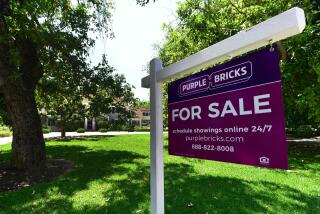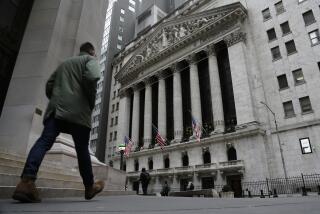Q&A: Tips for getting started on dividend-focused investing
Here is a primer on the mechanics of dividend-focused investing, and answers to some common questions investors may have.
Are stock dividend yields near historical highs?
No. The average dividend yield of the Standard & Poor’s 500 index stocks now is 2%. That’s up from the record low of 1.1% in early 2000, but well below the average yield of about 5% in the late 1970s.
Compared with short-term interest rates near zero and high-quality bond yields in low single digits, however, the yields of 2.5% to 4% on some of the most popular dividend-paying shares look relatively attractive — with the caveat that stocks always carry the risk of principal loss.
How is “yield” calculated, anyway?
Take a stock’s current annual dividend and divide it by the current price of the stock. That’s the percentage return, or yield, on the money you invest.
A $1-a-share annual dividend on a stock now priced at $30 yields 3.3%.
Can the yield rise over time?
Yes. If a company raises its dividend, your yield would be the new dividend divided by the share price you paid. Over time, if a $1-a-share dividend rises to $2 a share, the annualized yield on shares bought for $30 would be 6.7%.
By contrast, annual interest payments on bonds usually are fixed for the life of the bond.
If I’m interested in dividend income, why not just buy the stocks with the highest current yields?
A stock’s current yield should be just one consideration, analysts say.
Typically, the highest-yielding stocks are those of companies that have fairly slow growth prospects. The yields are higher because investors expect limited share price appreciation or dividend growth, or both.
Lower-yielding stocks, by contrast, may have much more potential for dividend increases down the road.
How do I know a company won’t cut or eliminate its dividend at some point?
There are no guarantees, but researching a stock before you buy can help minimize that risk.
First, check the company’s investor-relations page on its website. Some firms explain the goal they have for dividend increases and show the recent history of dividend changes.
Basic research you can do by simply searching the Internet under the company’s name and “dividends” also will turn up plenty of useful information.
One crucial question to ask is how much of a company’s earnings are currently being paid out as dividends each quarter.
If that “payout ratio” is high — say, 70% or 80% — a company may have much less room to raise the dividend than if the ratio is, say, 40%.
Don’t many investors just reinvest their dividends rather than take them in cash?
Yes. And major companies often offer dividend reinvestment plans, or DRIPs, that allow investors to buy shares directly from the company and have quarterly dividends invested in additional shares, at no commission charge.
If I’m trying to build a diversified portfolio of dividend-paying stocks, how many do I need?
Charles Carlson, editor of the DRIP Investor newsletter in Hammond, Ind., recommends building a portfolio of 20 to 30 stocks, diversified across industries so you aren’t dependent on one sector.
Josh Peters, dividend strategist at Morningstar Inc., thinks 15 to 20 stocks may be enough for many investors, and a manageable number to monitor.
He urges investors to start slowly: Identify stocks that are attractive, then buy in gradually, taking advantage of market pullbacks.
Patience is a hallmark of dividend investing, Peters says. “You make your money on the journey, not the destination.”
If I don’t have the wherewithal or desire to buy individual stocks, what about using mutual funds?
There’s a long list of choices for investors who want dividend-focused funds. As with individual stocks, the question is whether you want a higher current dividend yield, or a lower yield but the potential for faster dividend growth over time.
Christine Benz, Morningstar’s personal finance director, this month highlighted three funds for dividend seekers to consider: American Mutual (ticker symbol: AMRMX), Bridgeway Blue Chip 35 Index (BRLIX) and Vanguard Dividend Growth (VDIGX).
Also increasingly popular are exchange-traded funds that allow investors to focus on specific niches within the dividend-paying stock universe.
For example, the iShares High Dividend Equity fund (HDV) owns stocks that are screened for quality. The Wisdom Tree DEFA fund (DWM) targets stocks overseas, where dividend yields in many cases are higher than on comparable U.S. stocks.
Morningstar’s list of its favorite dividend ETFs for 2012 includes those two as well as Vanguard High Dividend Yield Index fund (VYM), PowerShares FTSE RAFI U.S. 1000 fund (PRF) and Vanguard Dividend Appreciation fund (VIG).
How are dividends taxed?
The top federal tax rate on dividends was cut in 2003 to 15%, the same rate as on long-term capital gains. The tax code favors dividends over interest income, which is taxed at ordinary income tax rates.
But those 2003 tax cuts will expire for all investors in 2013 unless Congress extends them, as it did in 2010. Without an extension, the top dividend tax rate would rise to 39.6%.
To raise revenue, President Obama has proposed boosting the dividend tax rate for individuals earning more than $200,000 a year and couples earning more than $250,000. The top rate on dividends would rise to nearly 45% for those people.
Obama’s proposal sets the stage for a battle with GOP leaders, who oppose higher dividend taxes.






